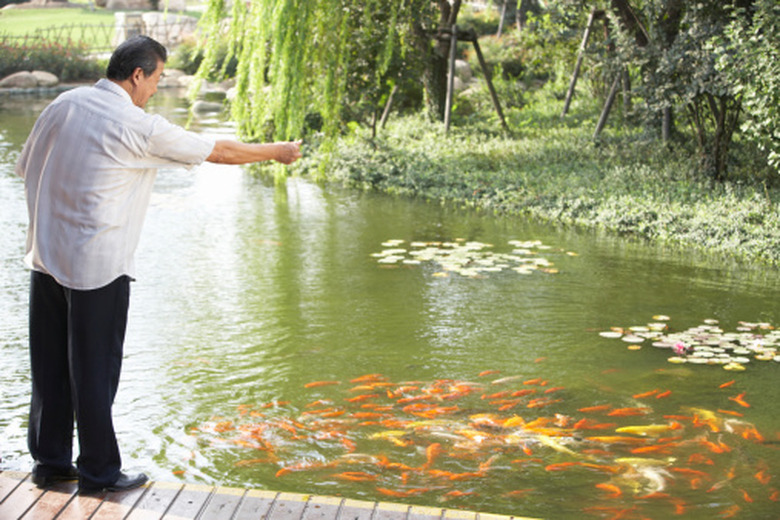How To Shock A Pond
Things Needed
- Fishing rod
- Fishing Line
- Hot glue
- Magnets (preferably NiHM)
- Rubber boots
- Rivet-free clothing
- Electrofishing equipment
- Generator
- Large fishing net
- Buckets (optional)
Tip
For a quick trolling for metal, approach an appliance repairman and ask for a magnetron magnet which is a large, powerful donut-shaped magnet used to operate microwaves. These magnets can have a line wound around them, tied off, and dropped to the bottom for easy trolling and retrieval. Exercise caution in having more than one together — they can easily raise a blood blister by snapping together on a finger.
As strange as it sounds, you can determine the fish population of your pond by temporarily stunning the fish with an electric current and taking a census. This will help you determine what kinds of fish are in your ponds and how many, if any, harmful species you need to remove. You will want to perform this task only on private ponds and not within public grounds. You can rent electrofishing equipment and consult with a local biologist or conservation officer to help you determine the best course of action for your pond's habitat and inhabitants.
Step 1
Make sure that anything metallic has been removed from your pond, be it old metal lids, lawn chairs, or any sort of debris that will interfere with the electric current. You can do this by trolling with a fishing line strung with NiHM (nickel metal hydride magnet) magnets which are small powerful magnets that will be drawn to any metallic debris. Attach the magnets to the line with a hot glue gun and weigh the end down.
Step 2
Hire someone with considerable experience with electrofishing. Contact your local home extension service, the fish and wildlife commission in your area, or call a local university and ask to talk to someone in the biology department — you can ask for a recommendation from a graduate student who has experience and access to the university's equipment and who may be willing to work inexpensively. You can also contact the local zoo for an expert who would be willing to work on your project for a small fee.
Step 3
Organize volunteers to stand along the bank of your pond placing one person for every 10 feet. Be sure you have an accurate measurement of both the bottom and the length of your pond. You can measure the bottom of your pond by marking off feet on your magnetic line and making recordings as you work.
Step 4
Assemble your equipment. Have a larger generator for larger ponds and have your volunteers spread the electrical nodes out every 10 feet. A volunteer should also be positioned at the dam to prevent fish from leaving the pond.
Step 5
Distribute fishing nets to your team members along with pre-filled buckets, which will be used for fish you choose to examine by your pond expert. Be sure you have enough water and a large bucket, or another large sized container, for unexpected large fish. Have your experienced team member shock the pond and gather the fish that you'd like to have analyzed.
Step 6
Release the fish back into the pond once you are done counting and have removed the electrical nodes.
